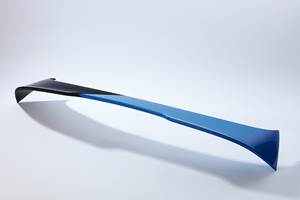Growth in Auto Production to Slow in 2016
Trends in leading indicators explain why.
The automotive industry has been fairly strong since 2010. Interest rates were low and incomes were improving, which spurred spending on motor vehicles and parts (MV&P). But the industry is likely to see its slowest growth since 2010 later in 2015 and into 2016. A look at the leading indicators explains why.
Real 10-Yr Treasury Rate: The real (inflation-adjusted) 10-yr Treasury Bond interest rate was 1.63% in June. The nominal rate is still only about a third of its historical average. However, inflation is historically low. The current annual average inflation is just 0.12% vs. a historical average of 4.15%. Therefore, the real Treasury rate is about two-thirds of its historical average. But low inflation is keeping real Treasury rates higher than in the recent past.
The Federal Reserve claims it will raise interest rates this year. However, with very low (or negative) inflation and a generally stable bond yield, it is likely that real 10-yr Treasury rates will continue to rise. Therefore, the trend in the real 10-yr rate is a negative sign for future automotive spending. Rising rates make cars more expensive. And, there are signs that new car sales have relied fairly significantly on sub-prime auto loans in 2015. Higher rates make it harder to find eligible sub-prime buyers.
Real Disposable Income: May’s real disposable income was roughly $12.3 billion (seasonally adjusted at an annual rate), an all-time high. In May, disposable income grew 3.5% compared with a year ago for the second month in a row. The current rate of annual growth was 3.1%. It appears that disposable income will see further accelerating growth over the next few months, but there are signs that it is nearing its peak rate of growth. While the trend in disposable income is a positive sign for automotive spending, it is likely outweighed by the trend in interest rates.
Real Motor Vehicle & Parts Consumer Spending: In May, real MV&P spending was at its highest level since July 2005 and its third highest level ever. Since 2010, the annual growth rate of spending has generally accelerated. In 2015, the annual rate of change in MV&P spending has grown at a rate of about 8.5%. The current rate of growth was more than double the historical average.. While the spending numbers are positive, the trend within the data indicates that spending is likely to grow at a slower rate in the near term.
Motor Vehicle & Parts Industrial Production: Automotive production tends to lag spending by up to six months. So, if the industry is entering a period of slower growth in spending, then MV&P production should see slower growth in 2016. Also, growth in production is likely to slow because the rate of growth in production since 2010 has been well above the rate of growth in spending (see chart).
Related Content
Automotive Awards Highlight ‘Firsts,’ Emerging Technologies
Annual SPE event recognizes sustainability as a major theme.
Read MoreMolder Repairs Platen Holes with Threaded Inserts
Automotive molder ITW Deltar Fasteners found new life for the battered bolt holes on its machine platens with a solution that’s designed to last.
Read MoreImpacts of Auto’s Switch to Sustainability
Of all the trends you'll see at NPE2024, this one is BIG. Not only is the auto industry transitioning to electrification but there are concerted efforts to modify the materials used, especially polymers, for interior applications.
Read MoreK 2022 Preview: Engineering Materials for Sustainability and E-Mobility
Materials that are sustainable yet offer equal performance to their fossil-based counterparts will be prominent at K 2022.
Read MoreRead Next
Advanced Recycling: Beyond Pyrolysis
Consumer-product brand owners increasingly see advanced chemical recycling as a necessary complement to mechanical recycling if they are to meet ambitious goals for a circular economy in the next decade. Dozens of technology providers are developing new technologies to overcome the limitations of existing pyrolysis methods and to commercialize various alternative approaches to chemical recycling of plastics.
Read MoreUnderstanding Melting in Single-Screw Extruders
You can better visualize the melting process by “flipping” the observation point so that the barrel appears to be turning clockwise around a stationary screw.
Read MorePeople 4.0 – How to Get Buy-In from Your Staff for Industry 4.0 Systems
Implementing a production monitoring system as the foundation of a ‘smart factory’ is about integrating people with new technology as much as it is about integrating machines and computers. Here are tips from a company that has gone through the process.
Read More
.JPG;width=70;height=70;mode=crop)






















